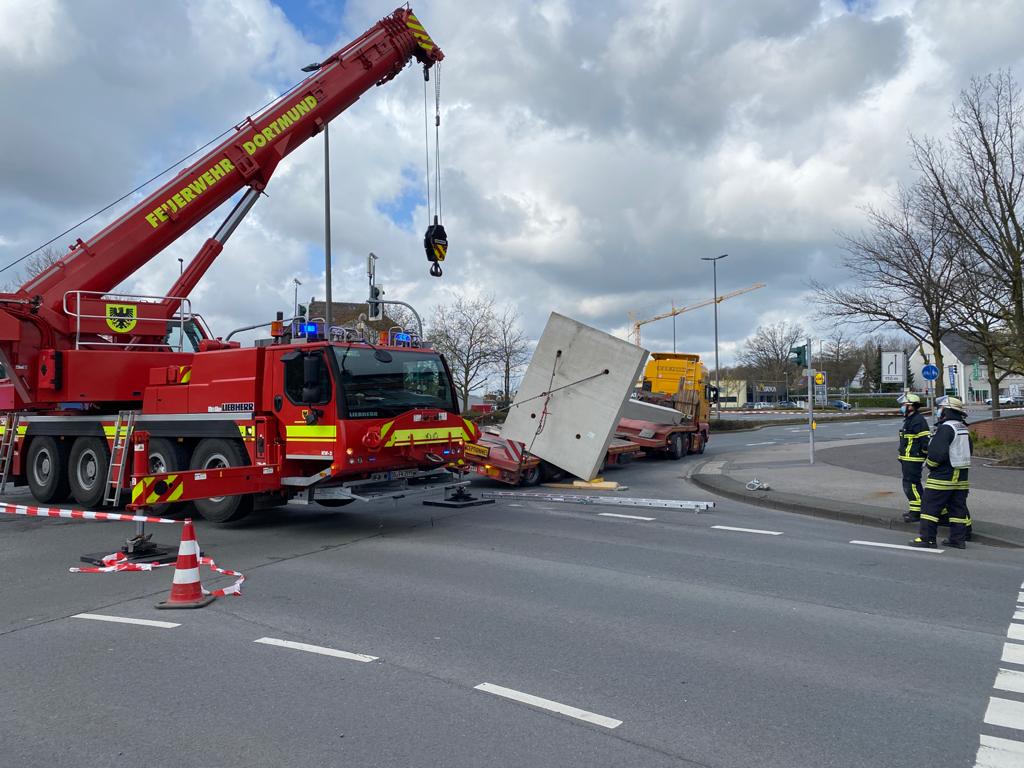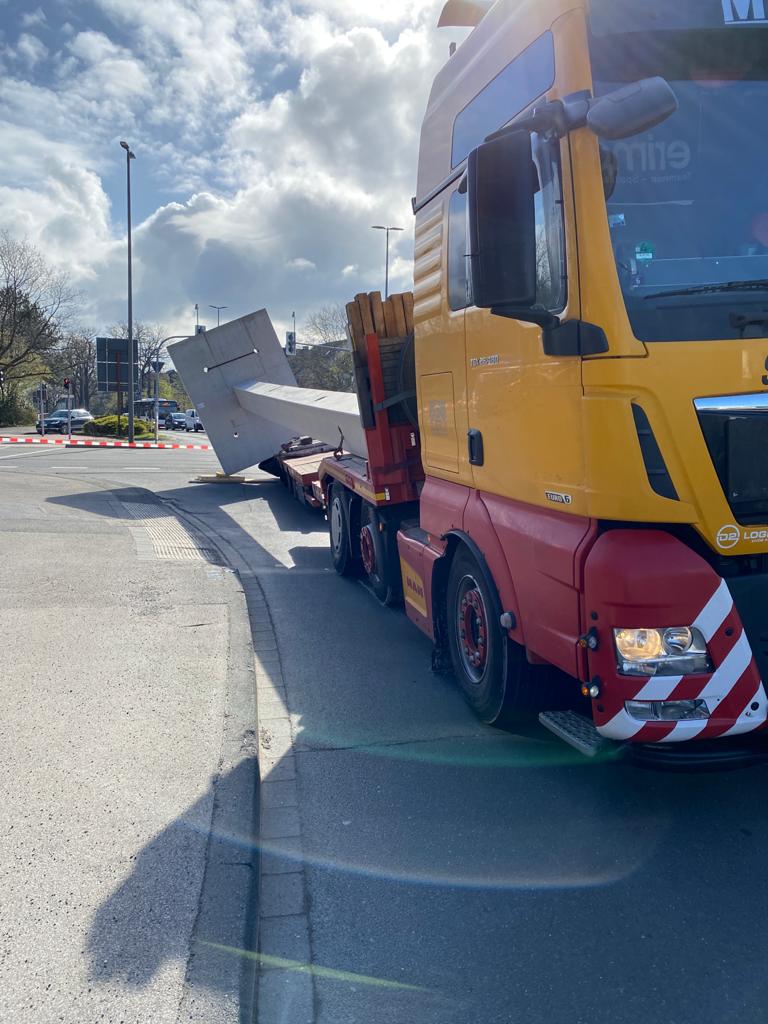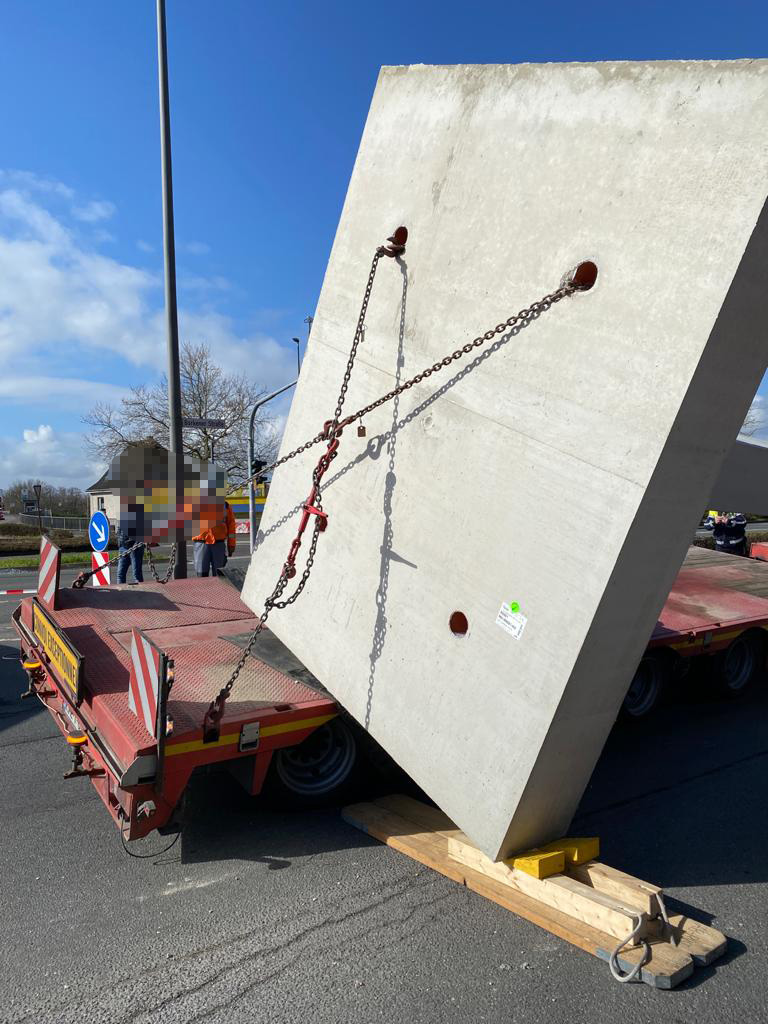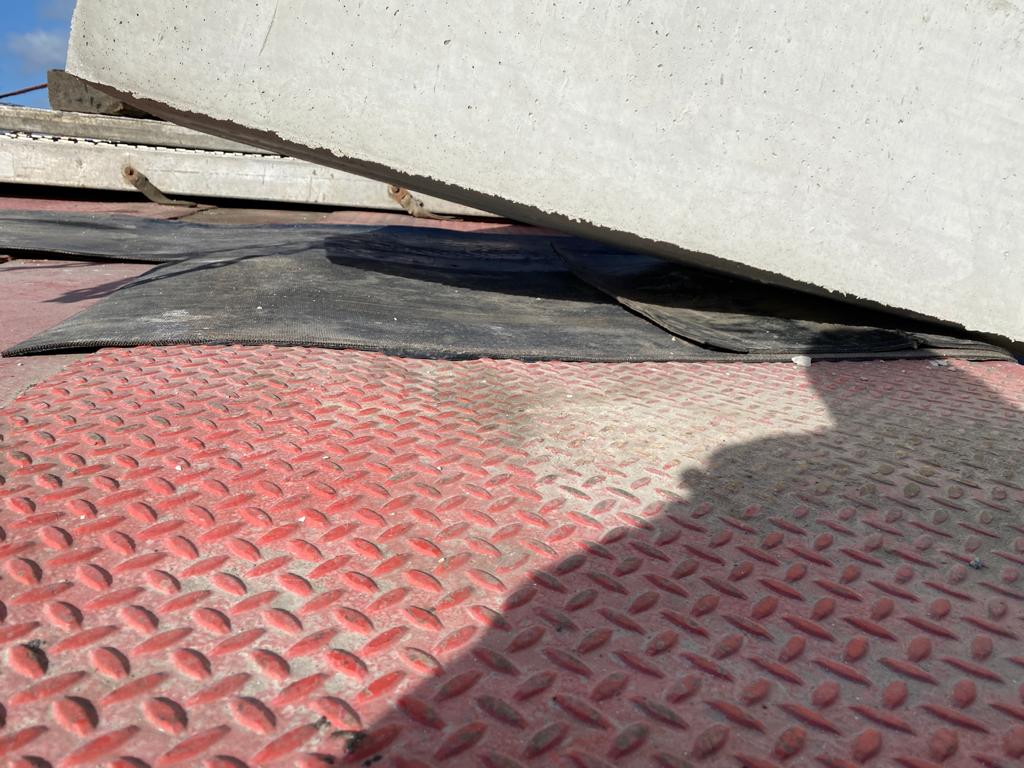| Photo of the month – June 2021 |
[German version] |
The elegant poise of concrete
A lowloader is transporting a concrete support or pillar to be used for constructing a hall. The real elegance and poise is that, although the support has slipped, it did not hit the road. The wood you can see there has only been placed under the base as a precaution. The driver put it there to prevent any damage to the road surface and to prevent the concrete component from being ruined if it slipped any further.

Figure 1 [Recklinghausen Police]
We could guess that the whole of the support has slipped to the right of the vehicle, but we have better photos to show what happened:

Figure 2 [Recklinghausen Police]
At the front, the actual column has slipped so far that the tie-down lashing has become a kind of “direct lashing”. Which begs the question why a direct lashing wasn’t used in the first place.

Figure 3 [Recklinghausen Police]
The most impressive attempt to secure the load can be seen at the back. Several chains were hooked together before being artfully threaded through the holes at the top. And the result was that the chain simply slipped through the holes when subjected to a lateral load. In other words, it did not behave in the way that many self-proclaimed experts had expected, namely get jammed and act as a direct lashing. Not at all! Short-link chains in particular (other kinds are not even permitted to be used on the road) slip over edges perfectly well and, as can easily be seen here, through the holes in the concrete. The wood is only there as a precaution. The driver had the presence of mind to prevent even greater damage, as the support is still poised above the road. So why did the support only slip this far and why is the right-hand chain hanging loose? Because one of the two hooks got caught or jammed in the hole. That’s the only reason for this delicate balancing act. So what did the driver intend to achieve with this “artistic” method of securing? By threading the chain through the base, he wanted to kill three birds with one stone. Firstly, he wanted to secure the load laterally with the supposed “direct lashing”, and secondly he wanted to secure the load longitudinally. And thirdly, he chose the upper holes because he “felt” that he wanted to do something to prevent the load from tipping.
- A threaded chain is definitely not a direct lashing! At least not to the sides.
- The longitudinal securing effect is miserable – we would estimate it at 30 % of the LC of the chain. To arrive at this figure, we have assumed the distance from the load securing point to the effective deflection point of the chain over the concrete to be 0.8 m and the effective length of the chain to the deflection point to be 2.50 m.
- And the anti-tipping effect is also marginal, as it is limited to the tie-down effect. This is because the chain(s) cross almost exactly at the center of gravity of the base plate of the support and, as we have learned, the chain simply slips through the holes.

Figure 4 [Recklinghausen Police]
Used conveyor belt “rubber” had been placed under the base plate of the support. If we look closely, we can already see the fabric structure of the belt, in other words, all the rubber has gone. In addition, this “rubber” is far from clean, but at least three layers had been put down.
It is laudable to try to reuse things that can no longer serve their original purpose. But not for load securing, for goodness’ sake! The word “securing” implies safety, and this supposed “recycling mentality” (it’s not really that important …) is completely misplaced here and is simply unsafe!
Clean heavy-duty mats are what are needed here! And not simply some junk that belongs on the rubbish tip or should be immediately sent for recycling (if possible).
How to secure this load:
- If the conveyor belt rubber really has to be used …
- Direct lashings through the lower holes to secure the load to the sides. As the tensioners are almost certainly too long, the hole on the opposite side of the base plate must be used with each chain.
- The load is secured longitudinally with a chain threaded through the lower holes and taken straight back to two of the lashing points. The securing effect of the chain is then well over 90 % of its LC.
- We have already mentioned that the actual column should be secured at the front with two direct lashings, one to each side.
- If clean heavy-duty mats are used, one belt at the front and one at the back, attached as tie-down lashings, would be sufficient.
- To secure the load longitudinally, we would use the chain threaded through the holes as described above.
- Because we attach great importance to safety, we would secure the load as described above, but replace the conveyor belt rubber with heavy-duty mats.
- Belts can also be used for lateral securing. These are placed around the column as loop lashings, as close to the front of the base plate as possible. These then provide the necessary minimum securing force through their tie-down effect and give good direct securing to the sides.
Your load securing columnists wish you a safe and secure early summer.
Back to beginning
